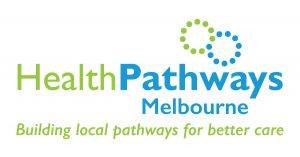
How can our PIP QI reports help manage patient smoking status for general practice?
About our PIP QI reports
North Western Melbourne Primary Health Network (NWMPHN) is continuing to provide regular, customised PIP QI data reports for any general practice in the region wanting to use data to drive improvement.
These reports are based on the 10 measures for the Practice Incentives Program Quality Improvement (PIP QI) Incentive.
Remember: you can choose any area of data driven quality improvement for the PIP QI Incentive, as long as you are working in partnership with NWMPHN. However, the 10 measures have been chosen as evidence-based measurements and are the ideal starting point for a QI activity.
In this article we are taking a closer look at PIP QI Measure 2: Percentage of active patients with a smoking status recorded.
For patients aged 15 to 29, only those with smoking status recorded in the last 12 months of data extraction are counted towards PIP QI targets. For patients aged 30 or older, the latest smoking status is considered as current status.
Why is this important?
According to the latest data from the Australian Institute of Health and Welfare:
- Tobacco smoking is the leading cause of preventable diseases and death in Australia.
- Smoking was responsible for 9.3 per cent of the total burden of disease in Australia in 2015, making it the leading risk factor contributing to disease burden.
- Almost three-quarters (73 per cent) of the burden due to smoking resulted in premature death.
- In 2015, smoking was responsible for more than 1 in every 8 deaths.
- Approximately 12 per cent of Australian adults continue to smoke.
Which populations should interventions target?
- Men are more likely than women to smoke, as are Indigenous people (40 per cent).
- People living in the lowest socioeconomic areas.
- People living in outer regional or more remote areas.
- People who are unable to work or are unemployed.
- People with lower education levels.
Recording of smoking status keeps our records up-to-date and prompts us to have conversations about smoking with appropriate patient populations. There is good evidence that brief advice significantly increases cessation rates and is highly cost effective.
How good are we at recording this now?
In the latest data collected in the NWMPHN catchment, 66.74 per cent of patients had a current smoking status recorded. If the ideal rate is 100 per cent, how do you feel about this result?
Now look at your own report. How do you compare to the NWMPHN average? How do you feel about your result? Is it higher or lower than you expected? What are the factors unique to your practice that you think influences the result?
Is 100 per cent ever achievable? For example, for younger patients the status needs to be updated annually. How achievable is that? What is a good target to aim for? 80 or 90 per cent? Think about what is achievable at your practice.
Set a goal
Plan
Plan how you are going to improve your smoking recording rates. An important step in making changes is to have an overall goal to work towards, with a definable measure.
Goal
For example: you may aim to improve the proportion of active patients with smoking status recorded from 60 per cent to 70 per cent.
Measure
For example: the percentage of active patients with smoking status recorded at baseline and 6 months after making changes.
Tips for improving the recording of smoking status in your practice
Around the practice
- Install TopBar. This helps by highlighting which patients do not have their smoking status recorded.
- Include recording of smoking status on the new patient registration form.
- Conduct targeted blitzes in your practice to increase recording of smoking status. For example: print a card for reception to hand out to patients that says “This month we are updating everyone’s smoking status. You will be asked in your consultation if your smoking status is recorded correctly. Your doctor has specialist training in discussing smoking and will be happy to discuss smoking with you if you wish.”
As a team
- Consider a team meeting and education session.
- Discuss correct recording (‘coding’) of smoking information with clinical staff members.
- Brainstorm ideas in your team to help improve smoking recording. You might form a project team.
Do it, study it, and act on any changes you want to make
The final step of the plan, do, study, act (PDSA) cycle is to act on what you plan to do – test the ideas, then study and reflect on what happened, and make any changes needed.
For example, in our practice we undertook a blitz on recording smoking status. We discovered we had to use a workaround to refresh the recording of smoking status in our medical software (Zedmed). So, in our reflection session, we updated everyone’s understanding of how to correctly record smoking status.
More information
More information on our quality improvement program and toolkits is available on our website.
Details on how to use the PIP QI reports is available on the Pen CS website.
The RACGP has published a guide to supporting smoking cessation for health professionals.
If you have any questions about quality improvement, please contact us on (03) 9347 1188 or email primarycare@nwmphn.org.au
HealthPathways Melbourne 
Visit the Smoking Cessation Advice page on Health Pathways Melbourne for assistance on how assess and manage smoking within your practice.
Are you a GP or health professional in our region who doesn’t have access to HealthPathways Melbourne? Request access online or contact info@healthpathwaysmelbourne.org.au




